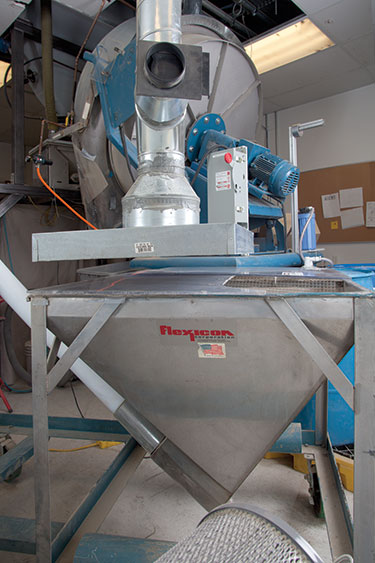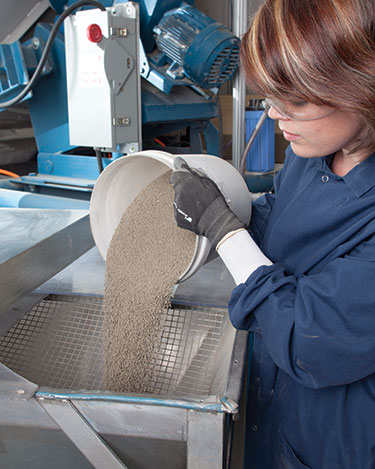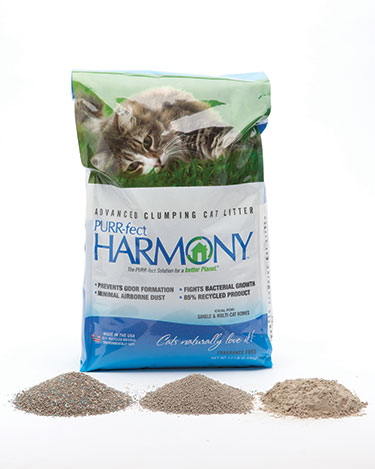 Click to enlarge
Click to enlargeMoist pellets enter the hopper from the pelletizer as the flexible screw conveyor carries them to the circular fluid bed dryer in rear. The mixer (right) blends in clumping and odor-control agents to make the final litter product.
 Click to enlarge
Click to enlargeOperator empties into the hopper the fragile, wet pellets that the flexible screw conveyor gently transports while preserving morphology and size distribution of the particles.
 Click to enlarge
Click to enlargePURR-Fect Solutions manufactures its eco-friendly cat litter from fly ash rather than from sodium bentonite clay which is obtained by environmentally harmful strip mining.


 Click to enlarge
Click to enlarge Click to enlarge
Click to enlarge Click to enlarge
Click to enlarge